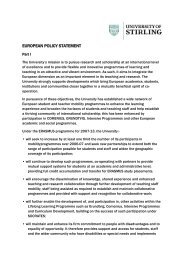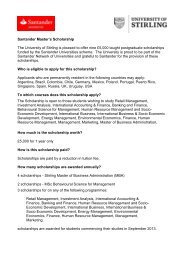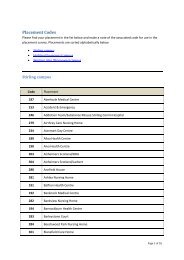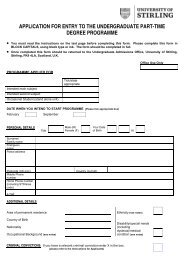Supporting a uK SucceSS Story: The impacT of - Research Councils ...
Supporting a uK SucceSS Story: The impacT of - Research Councils ...
Supporting a uK SucceSS Story: The impacT of - Research Councils ...
You also want an ePaper? Increase the reach of your titles
YUMPU automatically turns print PDFs into web optimized ePapers that Google loves.
Women better at endurance?<br />
Despite the growing popularity <strong>of</strong> extreme endurance events,<br />
the research surrounding this area is sparse. Often this is due<br />
to the remote location <strong>of</strong> the competitions, and them not<br />
being accessible for well-controlled data collection. When it<br />
was announced that Sharon Gayter would attempt to beat the<br />
men’s world record for long distance running on a treadmill over<br />
seven days at Teesside University, it was decided to collect as<br />
much valuable data as possible without disrupting the event<br />
itself. From the 14 to 21 December 2011 Sharon set a new World<br />
Record for running seven days consecutively on a treadmill. She<br />
beat the previous female record holder Mimi Anderson, who<br />
ran 650km, by 182.73km, and the male world record holder, Lee<br />
Chamberlain, who ran 753.24km in July 2009, by 79.33km.<br />
“This study was designed to track the physiological changes<br />
the body undergoes in an extreme event, and to quantify<br />
the overall demands <strong>of</strong> a seven day run.”<br />
This study was designed to track the physiological changes<br />
the body undergoes in an extreme event, and to quantify the<br />
overall demands <strong>of</strong> a seven day run. Before her record breaking<br />
attempt Sharon underwent a thorough physiological assessment<br />
in the Teesside University physiology labs which gave the<br />
researchers a baseline measure <strong>of</strong> Sharon’s status, and allowed<br />
them to track any changes as the event progressed. Throughout<br />
the event the researchers kept a diary <strong>of</strong> what Sharon ate and<br />
drank, so they could calculate how many calories she consumed<br />
in relation to how many she used during her run. In this respect<br />
Sharon is quite unique, as she is very efficient and her body only<br />
used a small amount <strong>of</strong> ‘fuel’.<br />
Being more economical and efficient is <strong>of</strong> benefit as this means<br />
that the body is able to use oxygen to break down stores <strong>of</strong><br />
fat in the body to fuel the movement - fats are in much more<br />
abundant supply than carbohydrates. <strong>The</strong> tracking <strong>of</strong> blood<br />
values gave the researchers an insight into how hard the body<br />
was working, and how much the body deteriorated and fatigued<br />
over the seven days. <strong>The</strong> results <strong>of</strong> this study are still being<br />
analysed, but they could provide a useful insight into the impact<br />
<strong>of</strong> endurance events on the human body and help inform how<br />
best athletes can prepare for them.<br />
34<br />
SECTION two : Health and Wellbeing
















